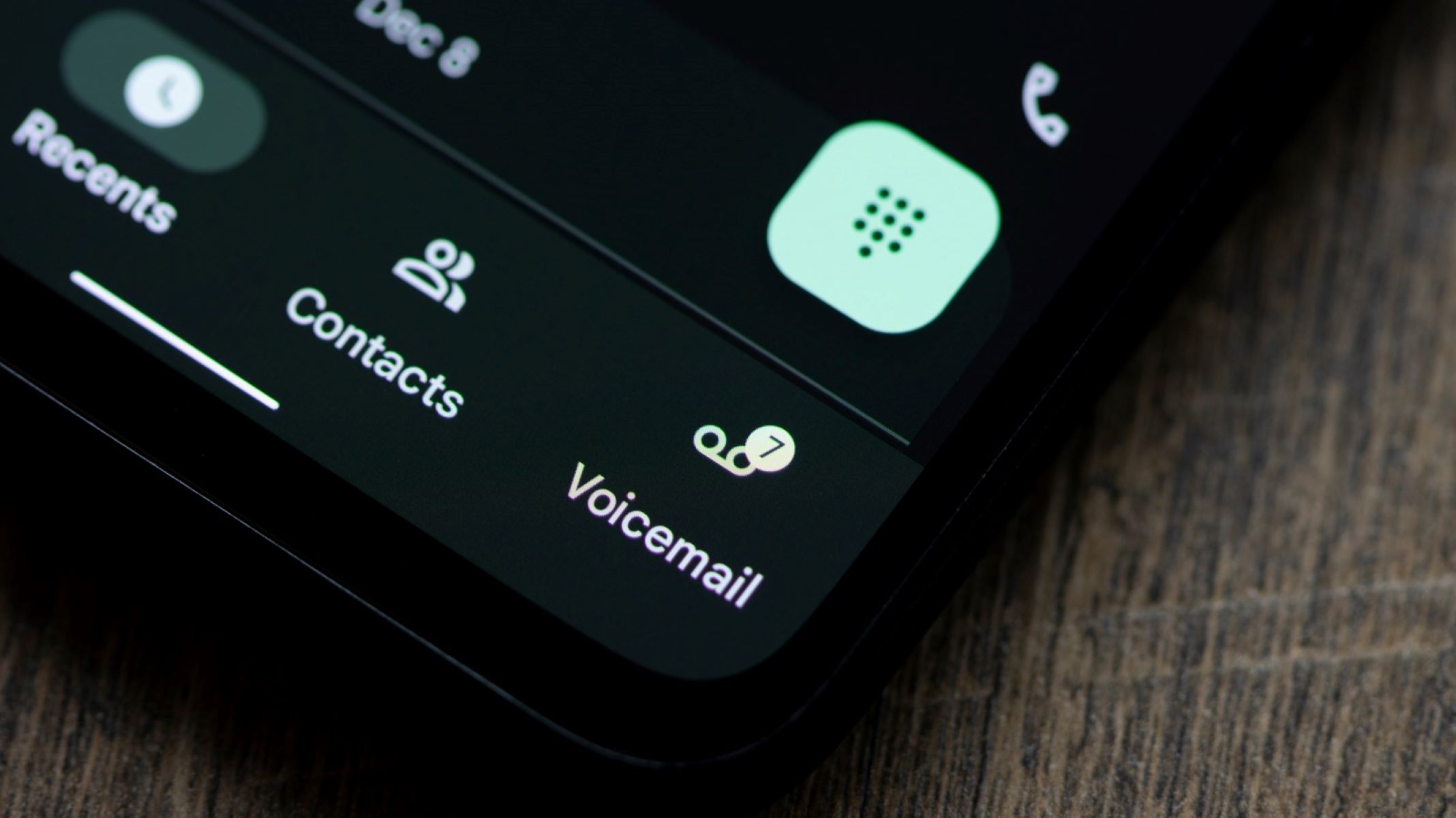Home>Technology and Computers>Phone Always Goes Straight To Voicemail – Here’s Why!


Technology and Computers
Phone Always Goes Straight To Voicemail – Here’s Why!
Published: February 3, 2024
Discover the reasons why your phone always goes straight to voicemail and learn how to troubleshoot it. Get expert tips and solutions for technology and computer-related issues.
(Many of the links in this article redirect to a specific reviewed product. Your purchase of these products through affiliate links helps to generate commission for Regretless.com, at no extra cost. Learn more)
Table of Contents
Introduction
Have you ever experienced the frustration of your phone calls consistently going straight to voicemail? It can be exasperating, especially when you're expecting an important call or simply trying to stay connected with friends and family. This perplexing issue often leaves us wondering why our phones seem to be avoiding our incoming calls. There are several factors that can contribute to this perplexing phenomenon, ranging from technical glitches to user settings. In this article, we will delve into the various reasons why your phone might be sending all incoming calls directly to voicemail. Understanding these potential causes can help you troubleshoot the issue and regain control over your phone's call management system. So, let's explore the possible reasons behind this perplexing occurrence and learn how to address them effectively.
Poor Network Coverage
Poor network coverage is one of the most common reasons why incoming calls may go straight to voicemail. When your phone is situated in an area with weak or limited network signal, it may struggle to establish a stable connection for incoming calls. This is particularly prevalent in remote or rural areas, as well as within buildings with thick walls or underground levels where the signal struggles to penetrate.
In such scenarios, your phone's inability to receive incoming calls can be attributed to the insufficient signal strength. When the signal is weak, the phone may not be able to establish a connection with the cellular network, resulting in calls being diverted directly to voicemail without the phone ever ringing.
To address this issue, consider relocating to an area with better network coverage, such as near a window or in an open outdoor space. Alternatively, you can try switching to a different network carrier that offers stronger coverage in your area. Additionally, using Wi-Fi calling or a signal booster can help mitigate the impact of poor network coverage, allowing you to receive calls even in areas with weak cellular signals.
Understanding the impact of poor network coverage on incoming calls is crucial in troubleshooting this issue. By taking proactive measures to improve your phone's connectivity, you can minimize the likelihood of calls consistently diverting to voicemail due to weak network signals.
Do Not Disturb Mode
Do Not Disturb (DND) mode is a feature designed to provide users with uninterrupted periods of peace and quiet by silencing incoming calls and notifications. When activated, this mode effectively mutes all incoming calls, diverting them directly to voicemail without causing the phone to ring or vibrate. While this feature serves a valuable purpose in managing distractions and maintaining privacy, it can inadvertently lead to all incoming calls being routed to voicemail, potentially causing frustration and missed communication opportunities.
One common reason for your phone consistently sending calls to voicemail could be the accidental or intentional activation of the Do Not Disturb mode. This feature is particularly useful during meetings, important tasks, or when seeking uninterrupted rest, as it allows users to silence their device without completely powering it off. However, if the DND mode remains enabled for an extended period or is inadvertently activated and forgotten, it can result in all incoming calls being diverted to voicemail, leaving the caller unable to reach you directly.
To check if the Do Not Disturb mode is the culprit behind your phone's behavior, simply navigate to your phone's settings and review the status of this feature. Depending on your device and operating system, you can typically access the Do Not Disturb settings through the sound or notification section of the settings menu. Once located, ensure that the DND mode is either turned off or adjusted to allow calls from specific contacts or favorites, thereby preventing all calls from being automatically sent to voicemail.
Furthermore, it's essential to be mindful of the automatic scheduling feature within the Do Not Disturb mode. Some devices offer the option to schedule specific time periods for the activation of DND mode, such as during sleeping hours or recurring daily activities. If this feature is enabled, it's important to verify the scheduled times and make adjustments as needed to ensure that incoming calls are not inadvertently silenced during crucial periods when you need to remain accessible.
By understanding the impact of the Do Not Disturb mode on call management, you can proactively address any issues related to calls consistently being diverted to voicemail. Whether it involves adjusting the DND settings, reviewing automatic scheduling, or simply being mindful of when to activate and deactivate this feature, taking control of the Do Not Disturb mode can help restore seamless communication and prevent missed calls from ending up in voicemail.
In essence, while the Do Not Disturb mode offers valuable respite from incessant notifications, it's important to manage its activation and settings diligently to avoid unintentionally silencing important calls and experiencing the frustration of constant diversions to voicemail.
Call Forwarding
Call forwarding is a useful feature that allows users to redirect their incoming calls to another number or voicemail, providing flexibility in managing communication accessibility. However, the utilization of call forwarding can inadvertently lead to the perplexing experience of all incoming calls consistently being diverted to voicemail.
When call forwarding is enabled on a device, whether intentionally or inadvertently, incoming calls are automatically rerouted to the designated forwarding number or voicemail without the phone itself ringing. This redirection can occur for various reasons, such as when the user is engaged in another call, experiencing poor network coverage, or intentionally directing calls to an alternate number for convenience or call management purposes.
One common scenario where call forwarding may lead to all incoming calls going straight to voicemail is when the feature is activated but not adjusted to suit the user's current needs or preferences. For instance, if call forwarding is set to redirect calls to a specific number that is unreachable or consistently sends calls to voicemail, it can result in the user seemingly missing all incoming calls as they are automatically rerouted without notification.
Additionally, inadvertent activation of call forwarding, whether through accidental settings adjustments or unfamiliarity with the feature, can lead to the unexpected diversion of calls to voicemail. Users may unknowingly enable call forwarding and subsequently encounter the perplexing situation of their phone consistently sending all incoming calls directly to voicemail, causing frustration and communication challenges.
To address the impact of call forwarding on this issue, users should proactively review and manage their call forwarding settings. By navigating to the call forwarding options within their device's settings or call management menu, users can verify the status of call forwarding and adjust the forwarding number or voicemail destination as needed. It's essential to ensure that call forwarding is configured to align with the user's current communication requirements and preferences, thereby preventing all incoming calls from being automatically redirected to voicemail without the user's knowledge.
Furthermore, understanding the various call forwarding options available, such as unconditional call forwarding, conditional call forwarding, and busy or unanswered call forwarding, can empower users to customize their call management strategy effectively. By leveraging these call forwarding features in a deliberate and informed manner, users can optimize their accessibility while mitigating the risk of all incoming calls consistently ending up in voicemail due to call forwarding settings.
In essence, while call forwarding offers valuable flexibility in managing incoming calls, it's crucial for users to actively monitor and tailor this feature to align with their communication needs. By exercising control over call forwarding settings and ensuring alignment with their preferences, users can prevent the frustrating experience of all incoming calls bypassing their phone and heading straight to voicemail.
Battery Drain
Experiencing persistent battery drain on your smartphone can inadvertently lead to the perplexing issue of all incoming calls consistently being diverted to voicemail. When a phone's battery is depleted or nearing exhaustion, it may exhibit erratic behavior in managing incoming calls, ultimately resulting in missed communication opportunities and the frustration of calls bypassing the phone and heading straight to voicemail.
Battery drain can be attributed to various factors, including resource-intensive apps running in the background, excessive screen brightness, frequent usage of power-hungry features such as GPS and video streaming, and aging battery capacity. When the phone's battery is depleted or struggling to maintain adequate power levels, it may prioritize essential functions while deprioritizing non-essential tasks such as ringing for incoming calls.
In the context of calls consistently being diverted to voicemail due to battery drain, it's crucial for users to proactively address this issue by optimizing their phone's power management. This can involve implementing measures to conserve battery life, such as reducing screen brightness, minimizing the use of resource-intensive apps, and enabling power-saving modes when the battery level is low.
Furthermore, users can benefit from monitoring and managing app activity to identify and mitigate any background processes that may be contributing to excessive battery drain. By reviewing the battery usage statistics within their device's settings, users can pinpoint apps and services consuming significant power and take appropriate action, such as restricting background activity or uninstalling unnecessary apps.
In addition to proactive power management, users can explore hardware-related solutions to address battery drain and its impact on call management. This may involve replacing an aging battery with diminished capacity, ensuring proper charging habits to maintain battery health, and considering the utilization of external power sources such as portable chargers or battery packs to mitigate the risk of unexpected battery depletion.
By understanding the correlation between battery drain and the diversion of incoming calls to voicemail, users can take proactive steps to optimize their phone's power management and mitigate the impact of depleted battery levels on call accessibility. Through a combination of software adjustments, app management, and consideration of hardware-related solutions, users can minimize the likelihood of persistent battery drain leading to missed calls and the frustrating experience of calls consistently being redirected to voicemail.
In essence, by addressing battery drain through effective power management strategies and potential hardware optimizations, users can regain control over their phone's call management system and prevent the inconvenience of missed communication opportunities due to depleted battery levels.
Airplane Mode
Airplane mode, a feature designed to disable a device's wireless communication capabilities, can inadvertently contribute to the perplexing experience of all incoming calls consistently being diverted to voicemail. When activated, airplane mode effectively suspends the phone's ability to send or receive calls, texts, and data, creating a disconnected state that can lead to missed communication opportunities and the frustration of calls bypassing the phone and heading straight to voicemail.
One common scenario where airplane mode may lead to all incoming calls going straight to voicemail is when the feature is inadvertently enabled and remains active without the user's awareness. This can occur through accidental activation while navigating the device's settings or through the use of shortcut commands that trigger airplane mode without explicit intent. In such cases, the phone effectively enters a disconnected state, rendering it unable to receive incoming calls and leading to the consistent diversion of calls to voicemail.
Additionally, intentional activation of airplane mode for specific purposes, such as during air travel or to conserve battery life, can result in all incoming calls being routed directly to voicemail. While the primary function of airplane mode is to comply with aviation regulations and minimize interference with aircraft systems, its unintended consequence of silencing incoming calls can create communication challenges for users who may not realize that their phone is effectively offline.
To address the impact of airplane mode on the issue of calls consistently being diverted to voicemail, users should proactively review their device's connectivity settings and ensure that airplane mode is not inadvertently enabled. By navigating to the device's settings menu or quick access toggles, users can verify the status of airplane mode and deactivate it if it is currently active. This simple action can restore the phone's connectivity and prevent all incoming calls from being automatically diverted to voicemail due to the disconnected state imposed by airplane mode.
Furthermore, understanding the potential triggers and implications of airplane mode activation can empower users to make informed decisions regarding its use. By being mindful of when and why airplane mode is activated, users can mitigate the risk of missed calls and ensure that their device remains accessible for incoming communication.
In essence, while airplane mode serves a valuable purpose in specific scenarios, its unintended consequences on call management highlight the importance of actively managing this feature to prevent calls from consistently diverting to voicemail. By maintaining awareness of airplane mode's status and purposeful activation, users can minimize the frustration of missed calls and maintain seamless accessibility for incoming communication.
Network Congestion
Network congestion, a prevalent issue in densely populated areas or during peak usage periods, can significantly impact the reliability of incoming calls and contribute to the frustrating experience of calls consistently being diverted to voicemail. When the cellular network experiences congestion, characterized by high levels of user activity and data traffic, the capacity to establish and maintain incoming call connections may be compromised, leading to missed communication opportunities and the automatic diversion of calls to voicemail.
During instances of network congestion, the limited available resources within the cellular infrastructure can result in delays or failures in establishing incoming call connections. This can manifest as the phone failing to ring or display notifications for incoming calls, ultimately leading to the calls being routed directly to voicemail without the user's knowledge. The impact of network congestion on call management is particularly pronounced in densely populated urban areas, venues hosting large events, and during peak usage times when a significant number of users are simultaneously accessing the network.
To address the impact of network congestion on the issue of calls consistently being diverted to voicemail, users can leverage various strategies to optimize their accessibility and mitigate the effects of network limitations. One effective approach involves proactively monitoring the prevailing network conditions and adjusting call management expectations during periods of known congestion. By recognizing and acknowledging the likelihood of network congestion during specific times or in certain locations, users can exercise patience and understanding when encountering challenges with incoming calls, thereby minimizing frustration and missed communication opportunities.
Furthermore, users can explore alternative communication methods during periods of network congestion, such as utilizing messaging apps, email, or Wi-Fi calling to maintain connectivity in scenarios where traditional voice calls may be impacted by network limitations. By diversifying their communication channels and leveraging available Wi-Fi networks, users can adapt to network congestion challenges and ensure seamless connectivity despite the potential impact on incoming call reliability.
In essence, understanding the implications of network congestion on call management empowers users to adapt their communication strategies and expectations, mitigating the frustration of missed calls and the consistent diversion of incoming calls to voicemail during periods of network limitations. By remaining informed and proactive in managing communication accessibility, users can navigate network congestion challenges with resilience and maintain connectivity despite the potential impact on traditional voice call reliability.
Conclusion
In conclusion, the perplexing experience of all incoming calls consistently being diverted to voicemail can stem from a variety of factors, ranging from technical glitches to user settings and environmental conditions. Understanding the potential reasons behind this issue is crucial for effectively troubleshooting and addressing the challenges associated with missed communication opportunities and the frustration of calls bypassing the phone and heading straight to voicemail.
By delving into the intricacies of poor network coverage, Do Not Disturb mode, call forwarding, battery drain, airplane mode, and network congestion, users can gain valuable insights into the potential triggers of this perplexing phenomenon. From the impact of weak signal strength on call connectivity to the unintended consequences of feature activation and network limitations, each factor contributes to the intricate landscape of call management challenges.
Proactively addressing these factors involves a combination of technical awareness, settings adjustments, and environmental adaptations. Whether it's optimizing network connectivity, managing call forwarding settings, maintaining battery health, or navigating the implications of airplane mode and network congestion, users can take proactive measures to mitigate the risk of all incoming calls consistently diverting to voicemail.
Ultimately, the proactive management of these factors empowers users to regain control over their phone's call management system, ensuring seamless accessibility for incoming communication and minimizing the frustration of missed calls. By leveraging a nuanced understanding of the potential triggers and implications of calls diverting to voicemail, users can navigate these challenges with resilience and adaptability, maintaining connectivity and communication accessibility in diverse scenarios.
In essence, by embracing a proactive and informed approach to troubleshooting the perplexing issue of calls consistently being diverted to voicemail, users can enhance their communication resilience and optimize their accessibility for incoming calls. Through a combination of technical awareness, settings management, and adaptive strategies, users can reclaim control over their call management experience and minimize the impact of missed communication opportunities.














